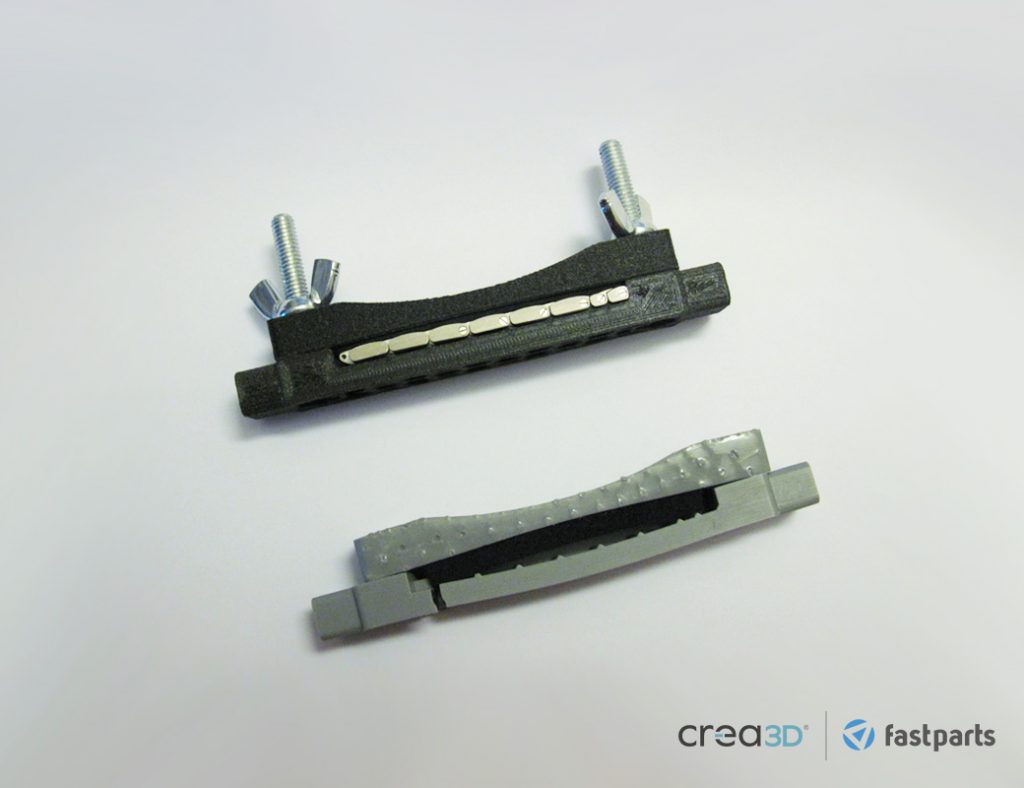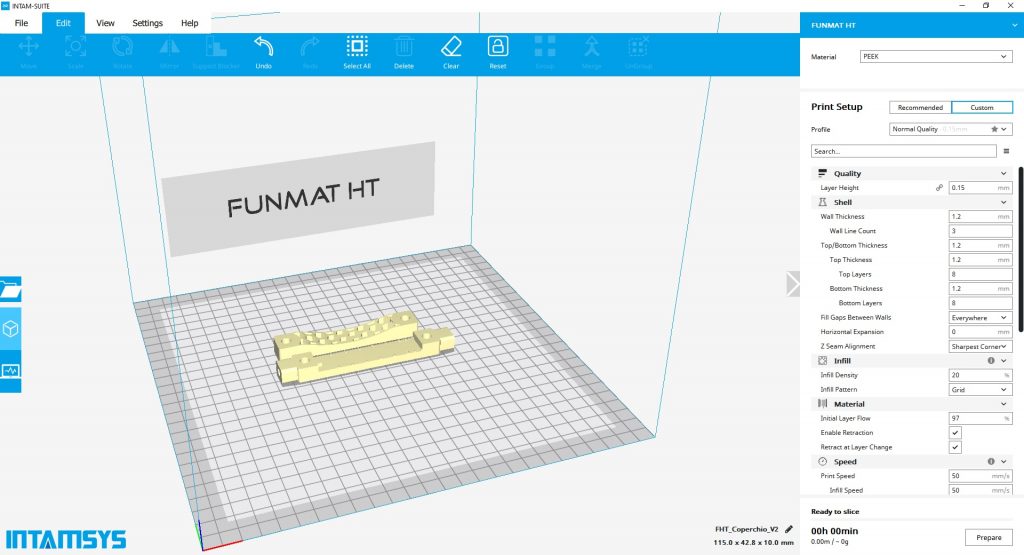Italian luxury jewelry supplier Promotion SpA has adopted INTAMSYS additive manufactured tooling as a means of optimizing its product assembly process.
Using INTAMSYS 3D printing, Promotion SpA has been able to create robust new bracelet alignment tools, capable of withstanding multiple testing cycles, without scratching the products’ fine exteriors. The revised tooling serves to reinforce the firm’s substantial in-house production capabilities, which have seen it become a close manufacturing partner to many premium watch and accessory brands.
“We control the entire process”, said Federica Tiso, R&D Material Scientist at Promotion SpA. “From design and prototyping, through manufacturing, quality control, and logistics. Together with the competence and the skills to develop and manufacture customized bracelets, we can offer our customers a complete solution.”

Accelerating jewelry prototyping
Based in the stylish Italian city of Vicenza, Promotion SpA is surrounded by a burgeoning fashion industry, with a strong demand for gold jewelry and watchmaking parts. The company specializes in the design, prototyping and production of jewelry accessories, and it has established lasting partnerships with a number of Swiss luxury watchmakers.
Since acquiring its first SLM machine back in 2014, Promotion SpA has used 3D printing to produce gold and bronze mock-ups as well as related tooling. Having found that additive manufacturing yields improved bracelet quality as well as reduced lead times, the firm went on to buy a second system for printing pure gold, before adopting its first DLP 3D printer in 2019 to create tooling from liquid resins.
Embracing polymer-based AM has enabled Promotion SpA to create customized tools with the properties to excel at each stage of the prototyping process. The company’s lab testing tools, for instance, are capable of assessing numerous designs without breaking, while its polishing equipment is now smooth enough to function without spoiling too quickly.
“Our products are highly-customized and manufactured in small batches,” explained Tiso. “This leads to the need to change often the tools used for assembly or polishing. Every bracelet undergoes a very tough quality and mechanical test, so we also need tools to simplify this important step.”

Converting to nylon carbon
Despite Promotion SpA’s extensive experience in using additive technologies, it recently had issues with a specific 3D printed fixture, that’s used to align the links of bracelets. The problem with the firm’s existing tooling, was that it was made from polymers that were prone to photodegradation, leaving them vulnerable to breakage under excessive force.
In order to develop more resistant tooling, Promotion SpA worked with Crea3D subsidiary FastParts, which advised that it switch to Nylon Carbon, and INTAMSYS’ entry-level FUNMAT HT 3D printer. Given that FFF machines are naturally less-detailed than resin systems, the engineers did have to remove some burs during post-processing, but they didn’t need to make any major design alterations.
The resulting end of arm tooling featured accurately-printed 0.8 mm ‘teeth,’ that proved capable of quickly and easily aligning bracelets based on the original 3D model. Measuring 115 × 16.75 × 10 mm, the final parts were also lighter than their predecessors, while still demonstrating the durability needed to prevent further prototyping failures.
“We have never had the opportunity to use materials like this, but we were positively impressed by its mechanical resistance and lightness,” concluded Tiso. “The parts printed by FastParts endure many cycles of fixing the lateral screws. Although the tooling is loaded, it does not warp in the middle.”
The glamor of 3D printed jewelry
The sheer accessibility of 3D printing has given rise to a huge maker community of jewelry designers in recent years, and manufacturers continue to support them with new machines, software, and materials. Last year, 3D printing OEM 3D Systems extended the Figure 4 platform to the jewelry market.
Once combined with the company’s jewelry castable material and 3D Sprint software, the machine is capable of producing casting-ready parts with a high level of accuracy and detail. Similarly, Gravotech markets its 3Design CAD/CAM software, a powerful engraving tool that creates the complex cutting paths needed to turn creative jewelry designs into reality.
In 2017, Italian 3D printing firm DWS showcased the capabilities of its systems for producing high-fidelity prints, by exhibiting a range of additive manufactured jewelry at CES. Designed as customer-ready pieces, the company’s colorful array of rings and necklaces were created using its Irix Digital Stone nano-filled ceramic.
To stay up to date with the latest 3D printing news, don’t forget to subscribe to the 3D Printing Industry newsletter or follow us on Twitter or liking our page on Facebook.
Are you looking for a job in the additive manufacturing industry? Visit 3D Printing Jobs for a selection of roles in the industry.
Featured image shows Promotion SpA’s robust new INTAMSYS 3D printed jewelry tooling. Photo via INTAMSYS.



